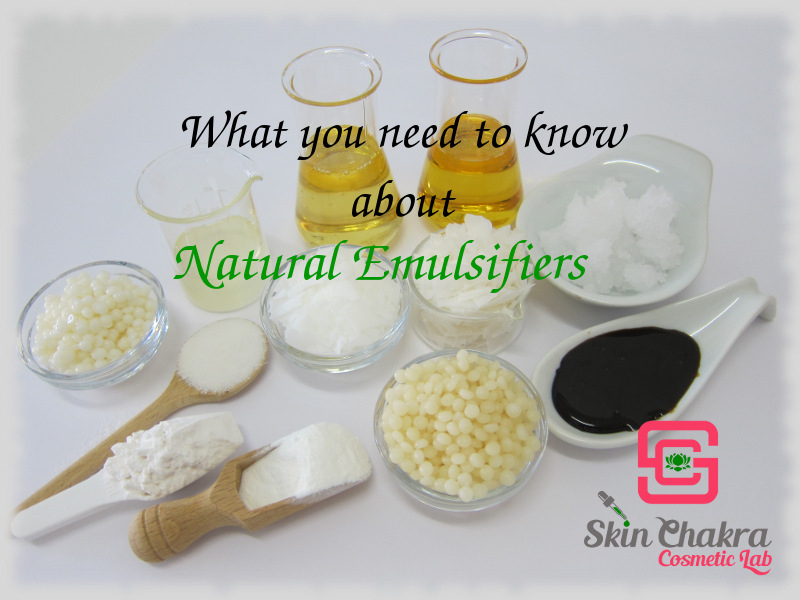DIY emulsifiers at home with natural ingredients?
Emulsifiers: Key Ingredients for Attaining Completely Mixed Formulas
Emulsifiers play an important role in creating steady blends of immiscible fluids, such as oil and water. Their unique properties allow them to lower surface stress, which is essential for harmony in numerous formulations. Understanding the differences in between all-natural and synthetic emulsifiers can influence item high quality significantly. As sectors increasingly look for to improve structure and shelf life, the choice procedure for the ideal emulsifier ends up being critical. What elements should be considered in this critical option?
Comprehending Emulsifiers: What They Are and Just how They Work
Although emulsifiers may appear like a simple addition to formulas, they play a vital function in stabilizing mixes of components that typically do not mix well, such as oil and water. These compounds operate by minimizing surface tension at the interface in between immiscible liquids, permitting them to blend more uniformly. Emulsifiers consist of both hydrophilic (water-attracting) and lipophilic (oil-attracting) homes, which allow them to secure themselves at the border of both stages. By doing so, they produce a protective obstacle that stops the droplets of one liquid from coalescing into bigger masses, therefore keeping a secure solution. The performance of an emulsifier relies on its molecular framework, which influences its ability to stabilize blends. In numerous applications, from food to cosmetics, emulsifiers assure a consistent appearance and look, improving both functionality and consumer allure. Their importance can not be overemphasized in accomplishing well-blended formulations.
Kinds of Emulsifiers: All-natural vs. Synthetic
Emulsifiers can be generally categorized right into two kinds: natural and artificial, each offering unique advantages and applications. All-natural emulsifiers, originated from plant or animal resources, include casein, lecithin, and gum arabic (emulsifiers). These emulsifiers are frequently favored in clean-label and natural items because of their very little processing and biocompatibility. Their mild nature makes them ideal for sensitive solutions, specifically in food and cosmetics

On the various other hand, synthetic emulsifiers such as mono- and diglycerides, and polysorbates are made through chemical procedures. They are typically made use of in commercial applications as a result of their security and effectiveness in creating solutions. Artificial emulsifiers frequently exhibit exceptional performance in severe problems, such as high temperature levels or differing pH levels. The option between natural and synthetic emulsifiers largely relies on the certain formulation demands, regulative factors to consider, and consumer choices, influencing their reliable application in various markets.
Functions of Emulsifiers in Food and Cosmetic Formulations
The duty of emulsifiers prolongs past plain stabilization; they are basic in accomplishing the desired appearance, appearance, and rack life of food and cosmetic items. In food formulations, emulsifiers aid mix oil and water, creating smooth and uniform textures crucial for sauces, dressings, and dairy products. They lower surface area stress, improving the security of emulsions, which prevents separation and lengthens freshness.
In cosmetics, emulsifiers ensure that components, such as oils and water, mix perfectly, supplying a pleasant feeling and boosting application. emulsifiers. They add to the item's thickness and spreadability, crucial for creams, products, and creams. Additionally, emulsifiers can encapsulate active components, enhancing their circulation and performance in formulations. By managing texture and enhancing sensory qualities, emulsifiers play an essential function in meeting customer expectations in both food and cosmetic sectors, ensuring products are not only appealing yet also functionally efficient
Picking the Right Emulsifier for Your Product

Additionally, the target application-- whether for food, cosmetics, or drugs-- will certainly influence the choice. Food-grade emulsifiers must comply with security policies, while cosmetic emulsifiers might require skin compatibility. Assessing aspects such as HLB (Hydrophilic-Lipophilic Equilibrium) aids in forecasting emulsifier behavior in certain solutions. Ultimately, a thorough evaluation of both regulative factors to consider and functional demands is essential to select the most reliable emulsifier, making sure the last product fulfills the preferred quality and stability standards.

Tips for Effective Solution Development and Stability
Achieving successful solution formation and stability calls for mindful interest to a number of critical variables. The selection of emulsifier plays a critical duty; it needs go to this site to be suitable with the oil and water phases to assure reliable stabilization. Second, the proportion of oil to water need to be well balanced, as an improper ratio can lead to instability. Third, the mixing procedure must be regulated; high shear mixing can help achieve smaller sized bead dimensions, improving security.
Temperature also affects emulsion stability; keeping ideal temperature levels during solution prevents early separation. In addition, including stabilizers such as thickeners can even more enhance thickness, reducing the probability of stage separation. Finally, conducting detailed security examinations after formula will certainly assist identify potential issues, enabling changes before final production. By adhering to these standards, formulators can attain consistent and reliable solutions that keep their preferred residential properties over time.
Regularly Asked Concerns
Can Emulsifiers Be Made Use Of in Vegan Formulations?
Yes, emulsifiers can be used in vegan solutions. Lots of plant-based emulsifiers, such as lecithin from soy or sunflower, offer reliable blending without animal-derived ingredients, making them appropriate for a variety of vegan items.
What Prevail Allergens in Emulsifiers?
Common allergens in emulsifiers include soy, dairy products, and eggs, as specific emulsifiers are stemmed from these resources. In addition, some people may respond to preservatives or additives used together with emulsifiers in numerous formulations.

How Do Emulsifiers Effect Rack Life of Products?
Emulsifiers enhance item security by avoiding splitting up of active ingredients, thereby expanding rack life. They minimize wasting caused by microbial growth and oxidation, resulting in long term quality and enhanced high quality in numerous food and aesthetic formulas.
Are There Any Health And Wellness Worries Connected With Emulsifiers?
Research indicates possible health and wellness problems linked with emulsifiers, consisting of gut microbiome changes and swelling. While governing bodies generally deem them secure, ongoing studies proceed to explore lasting impacts on health and total wellness.
Can Emulsifiers Improve Taste or Aroma in Formulations?
Emulsifiers can enhance flavor and scent in solutions by enhancing ingredient dispersion and security. This results in a more uniform item, enabling tastes to fuse properly, ultimately resulting in a more delightful sensory experience for consumers.
Emulsifiers might seem like an easy enhancement to solutions, they play a necessary duty in maintaining blends of ingredients that commonly do not mix well, such as oil and water. In food formulas, emulsifiers help blend oil and water, creating consistent and smooth structures crucial find here for sauces, dressings, and milk items. Food-grade emulsifiers must abide with security regulations, while aesthetic emulsifiers might need skin compatibility. Usual irritants in emulsifiers include soy, dairy products, and eggs, as specific emulsifiers are derived from these resources. Emulsifiers can improve flavor and published here aroma in formulas by enhancing active ingredient dispersion and stability.